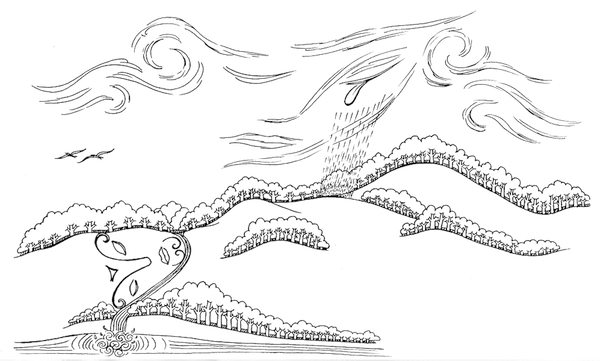
Ranginui rāua ko Papatūānuku
Raumati Technology Centre has always included sustainability in their teaching and learning, but over the last few years they have started diving deeper through a new, focused, sustainability programme. This work has the potential to provide a model for other technology centres around the country.
How Raumati Technology Centre has been integrating sustainability
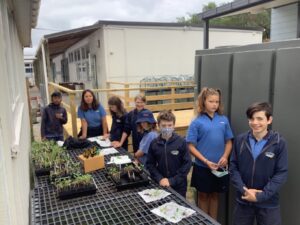
Students ready to taste the microgreens they have grown
Students from 10 local primary schools flow through Raumati Technology Centre as part of their technology education. That’s 1000 students per week. The centre has five main programmes: Foods, Hard Materials, Textiles, Digital Discovery and STEAM. Sustainability has been threaded through their programmes for many years.
In the Foods programme ākonga conserve their water to use for dish washing. They learn about food waste and how to reduce it by composting their scraps. They discuss the sustainability of different foods and the seasonal options.
Many of the Hard Materials projects have a sustainability related purpose eg. creating wētā motels and bird feeders, and all the wood used is untreated and sustainably grown (eg. pine).
As part of the Textiles programme, students use donated fabrics and recycled items. They also learn about the industry and how the choices they make as consumers (and as our future manufacturers) impact the environment. They explore things like how much water it takes to grow cotton and the huge impact this has. An ethical fashion chart helps demonstrate how different stores in Aotearoa compare in their sustainability.
In STEAM students are upcycling materials, such as plastics, electronic components and scrap wood, to create new products.
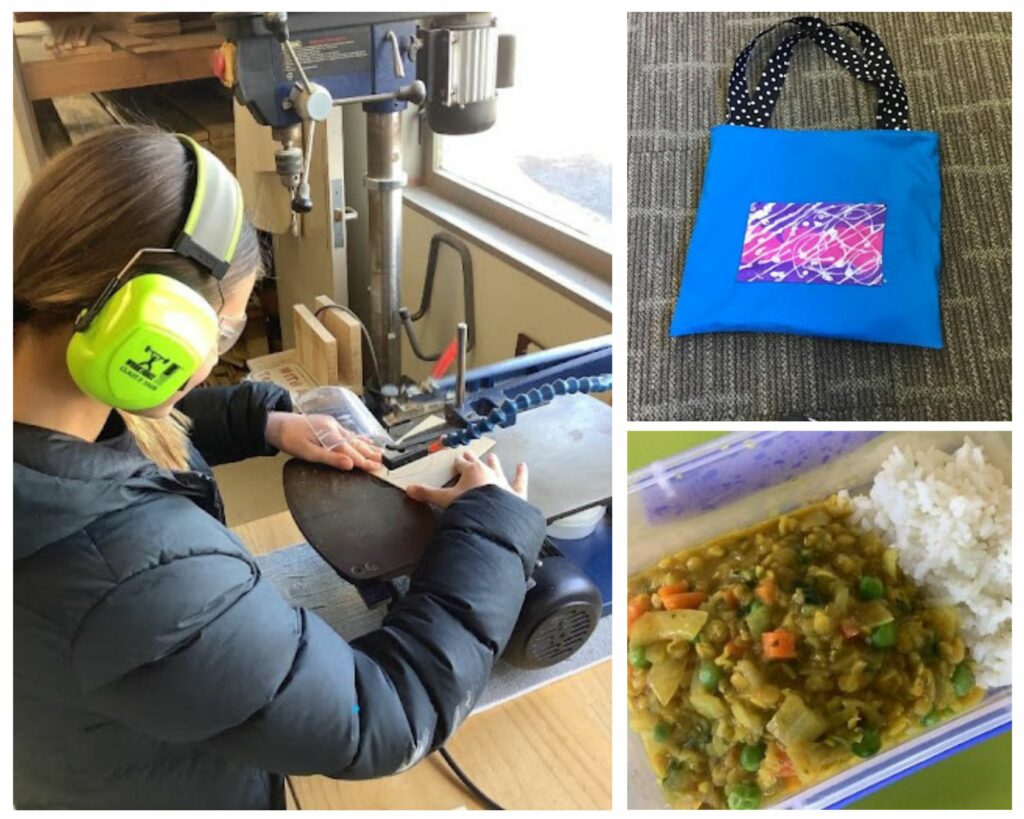
Sustainable materials are used in each of the technology progammes. Here, Myah uses the scroll saw, Joel made a bag using donated fabric and Eva’s made this delicious lentil curry.
A new sustainability focused programme
In 2020, with a growing roll, it became clear that the centre would need a sixth programme to add to their curriculum and an additional space in which to teach it.
Teacher Anne-Marie Doucet, had always dreamed of a school curriculum based on environmental awareness and solutions to environmental issues. With a passion for regenerative communities as well as qualifications and experience in Environmental Sciences, Environmental Education, Ecology and Horticulture, she could see the opportunity for a new programme with a focus on the fundamental principles behind sustainability.
The initial proposal Anne-Marie took to the lead teacher was based on UNESCO’s Education for Sustainable Development.
“It’s time for education leaders to use this period of disruption to ensure that what people learn is truly relevant to their lives and to the survival of the planet.” UNESCO
The lead teacher Pip Timoteo, was excited to see that Anne Marie’s suggestion not only complemented what was already happening in the centre but also provided additional content. She started looking for a similar approach grounded in Aotearoa and came across Enviroschools.
Connecting the Technology Centre with Enviroschools
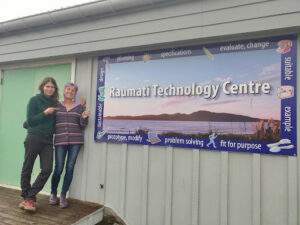
Raumati Technology Centre teachers Anne-Marie Doucet and Pip Timoteo. The sign affirms the centre’s values including “Sustainable Design, Problem Solving, and Fit for Purpose”
Pip and Anne-Marie both participated in an “Introduction to Enviroschools” workshop. They explored the action learning cycle and guiding principles. They appreciated the opportunity to meet a range of other local teachers interested in sustainability and being exposed to the Māori perspectives embedded in the resources. They felt motivated and confident about the direction they were heading in.
“Although being a Technology Centre we weren’t the norm for an Enviroschool, our ethos was definitely a great fit. Amanda’s Enviroschools Community Facilitator role has been valuable support for connecting us to people who have been on similar journeys or have skills or knowledge that might be relevant to us,” says Pip.
“Some of the solutions to our environmental crisis can be found in technology. We want to nurture and encourage young technologists to help be part of that solution.” Teachers at Raumati Technology Centre
The students were completely on board too.
“We want to use all our technology skills and knowledge to solve problems and help combat climate change. We want to learn more about living sustainably [and, as] importantly we want to make sure the technology centre is a sustainable environment.” Skyla, Jack and Cory
New building a critical component for progressing the vision
The centre was already bursting at the seams so creating an appropriate physical space to carry out this learning was pivotal to the new programme. It needed to have good access to the outside world and students envisioned a greenhouse as an extension to the building. They imagined solar panels with the potential to eventually move off-grid and they wanted good access to fruit trees, and native plants to absorb carbon and attract biodiversity.

Student’s vision for the new classroom – watch their video here
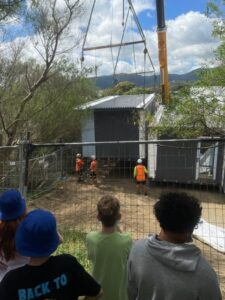
Ākonga watch in excitement as the new sustaibaniliy classroom arrives on site.
Conversations with MoE in mid 2021 to address roll growth quickly secured approval for a new building. While the building was being created as sustainably as possible in a workshop in Te Awa Kairangi, they began the school year running the sustainability programme out of a resource room, taking the students outside at every opportunity.
Students watched the crane deliver the building in March and they were using the building by the end of the Term 1, 2022.
Diving into fundamental principles
The new sustainability programme immerses ākonga in deeper learning that underpins sustainability. It provides the bigger picture of how and why sustainability is a critical consideration in our everyday lives in all range of contexts.
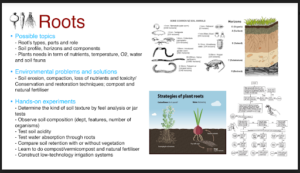
Ākonga explore ecological health conditions and conduct expirements based on each part of the plant.
In order to ground the learning in natural cycles, the 2022 programme follows plant biology. Ākonga explore conditions for ecological health, the associated environmental issues and conduct hands-on experiments based on each part of the plant (roots, seeds, leaves and flowers).
For example, they began the year by looking at roots. This involved understanding soil formation and layers. Students explored microfauna and living dynamics, testing soil texture and studying erosion, loss of nutrients and potential restoration techniques.
When they came to look at flowers and fruits, pollination, bee decline and the alternatives to pesticides were explored.
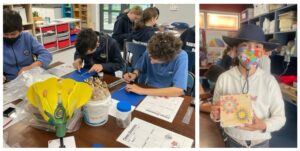
A dissection activity reinforced the learning for identifying parts of a flower. Reiana shares her completed and decorated Flower Press.
Positive responses and potential for community action
The parents are happy with the programme, some of them wishing they could participate in the class themselves.
“Sounds like a really interesting class that I would like to take!” “My girl came home last week chatting all about the soil and testing it and using filters and coffee… she loved it. She’s nervous because she’s scared of worms so will hopefully learn to overcome that fear and learn to enjoy the soil.” – parent feedback
The initiative is sparking interest further afield in the community with another school that is strongly focused on education for sustainability coming to check out the centre as a place to potentially bring their students.
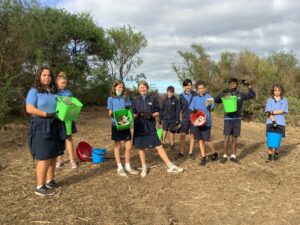
Rubbish collection in vacant land between the Technology Centre and Kāpiti College.
The consultation and discussion process also got students identifying the opportunity to restore what is commonly referred to as the “wasteland” adjacent to the centre. The teachers and students have begun working with Kāpiti and Porirua Enviroschools Community Facilitator, Amanda Dobson to engage in a wide range of community conversations to progress this project. She has helped them to connect with mana whenua, Te Atiawa ki Whakarongotai, to start with an understanding of the history of the site before progressing a collaborative community project. With mana whenua support this could potentially be progressed as part of the new programme.
Lead teacher Pip is delighted with how things are going. She wants tamariki to have hope for a brighter future and for them to want to make a difference. She can see this developing through the sustainability programme.
“Anne-Marie has developed a programme that gives tamariki facts and figures but also gives hope, with positive alternatives and activities.”